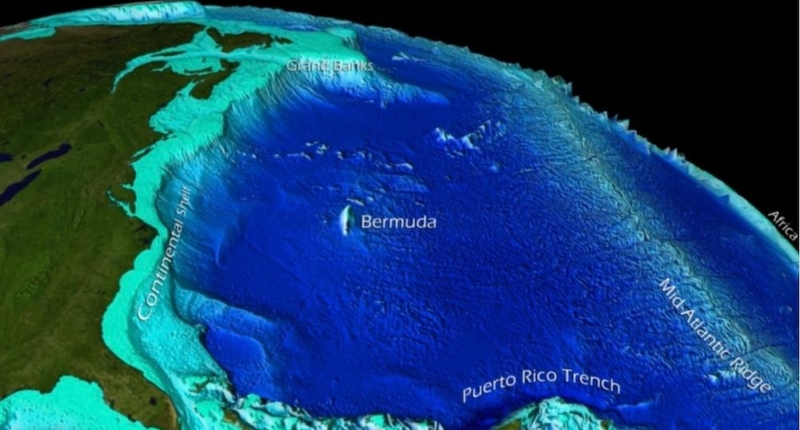Bottom marine heat waves are a growing concern for seafloor ecosystems that house many commercially fished creatures. Scientists have used existing measurements to simulate atmospheric conditions and ocean currents to fill in the gaps for difficult-to-access seafloor ecosystems. They discovered that bottom marine heat waves can last longer than similar surges at the surface, and these temperature fluctuations can occur simultaneously at both the surface and the seafloor in shallow areas where waters from different levels can intermingle. Warm bottom water temperatures have been linked to an increase in invasive lionfish populations and coral bleaching. However, scientists do not yet have a good enough picture to predict when and where such bottom marine heat waves will occur. The study highlights the need for more monitoring of the deep ocean to understand the full extent of the impact of bottom marine heat waves. These findings are particularly important because bottom-dwelling organisms, such as corals and sponges, are already under significant pressure from ocean acidification, plastic pollution, and overfishing.
The Impact of Bottom Marine Heat Waves on Deep Sea Creatures
A new study has found that heat waves are not just affecting the surface of the ocean but are reaching the ocean floor with potentially catastrophic consequences for deep-sea creatures. These so-called “bottom marine heat waves” last longer than surface heat waves and affect many key species, such as lobster and cod.
It has long been known that spikes in surface water temperature can devastate an ocean’s ecosystem. In fact, from 2013 to 2016, the surface waters of the Pacific Ocean along the North American coastline warmed up in a phenomenon dubbed “the blob,” which led to the deaths of 1 million seabirds because their main meal source (fish) had been severely impacted.
However, something similar is now happening in deeper waters. The study found that the phenomenon of bottom marine heat waves is a global one, occurring around Australia, in places like the Mediterranean, and Tasmanian seas. Lead author Dillon Amaya, a research scientist in NOAA’s Physical Science Laboratory in Boulder, Colorado, said, “This is not something that’s unique to North America.”
The ocean has absorbed approximately 90% of the excess heat from global warming, resulting in an increase of about 1.8 degrees Fahrenheit (1 degree Celsius) over the past 100 years. This has led to a 50% increase in surface marine heat waves in the past decade, according to a statement by the researchers. However, scientists had no clear picture of how the ocean depths responded when surface temperatures spiked.
The new study, published in the journal Nature Communications, warns that bottom marine heat waves can be devastating because they last longer than surface heat waves and affect many key species. The authors recommend more monitoring of the deep ocean to understand the full extent of the impact. This new finding is particularly important because bottom-dwelling organisms, such as corals and sponges, are already under significant pressure from ocean acidification, plastic pollution, and overfishing.
In conclusion, the impact of heat waves on the deep ocean floor is an issue that requires urgent attention. If we fail to act, the consequences could be catastrophic for the creatures that live in the deep sea and ultimately for the entire ocean ecosystem.
Bottom Marine Heat Waves: Effects on Seafloor Ecosystems
Scientists have used existing measurements to simulate atmospheric conditions and ocean currents to fill in the gaps for difficult-to-access seafloor ecosystems. According to a statement, these ecosystems are often populated by lobsters, scallops, flounder, cod, and other commercially fished creatures. They discovered that bottom marine heat waves can last longer than similar surges at the surface, and these temperature fluctuations can occur simultaneously at both the surface and the seafloor in shallow areas where waters from different levels can intermingle.
Warm bottom water temperatures have been linked to an increase in invasive lionfish populations and coral bleaching. However, scientists do not yet have a good enough picture to predict when and where such bottom marine heat waves will occur. There are some hypotheses about why these things are happening. One possible driver is changes in ocean currents, such as the Gulf Stream, which is a warm water current that dominates the coastal system on the U.S. East Coast. Another potential factor is upwelling, or the rising of colder, deeper water upward in the water column. Changes in the rate of upwelling can be seen as changes in subsurface temperature along the continental shelf.
The study highlights the need for more monitoring of the deep ocean to understand the full extent of the impact of bottom marine heat waves. These findings are particularly important because bottom-dwelling organisms, such as corals and sponges, are already under significant pressure from ocean acidification, plastic pollution, and overfishing.
In conclusion, the study shows that bottom marine heat waves are a growing concern for seafloor ecosystems, which are home to many commercially fished creatures. Warm bottom water temperatures can have devastating effects, and scientists need to conduct more research to understand these phenomena better.
Don’t miss interesting posts on Famousbio









